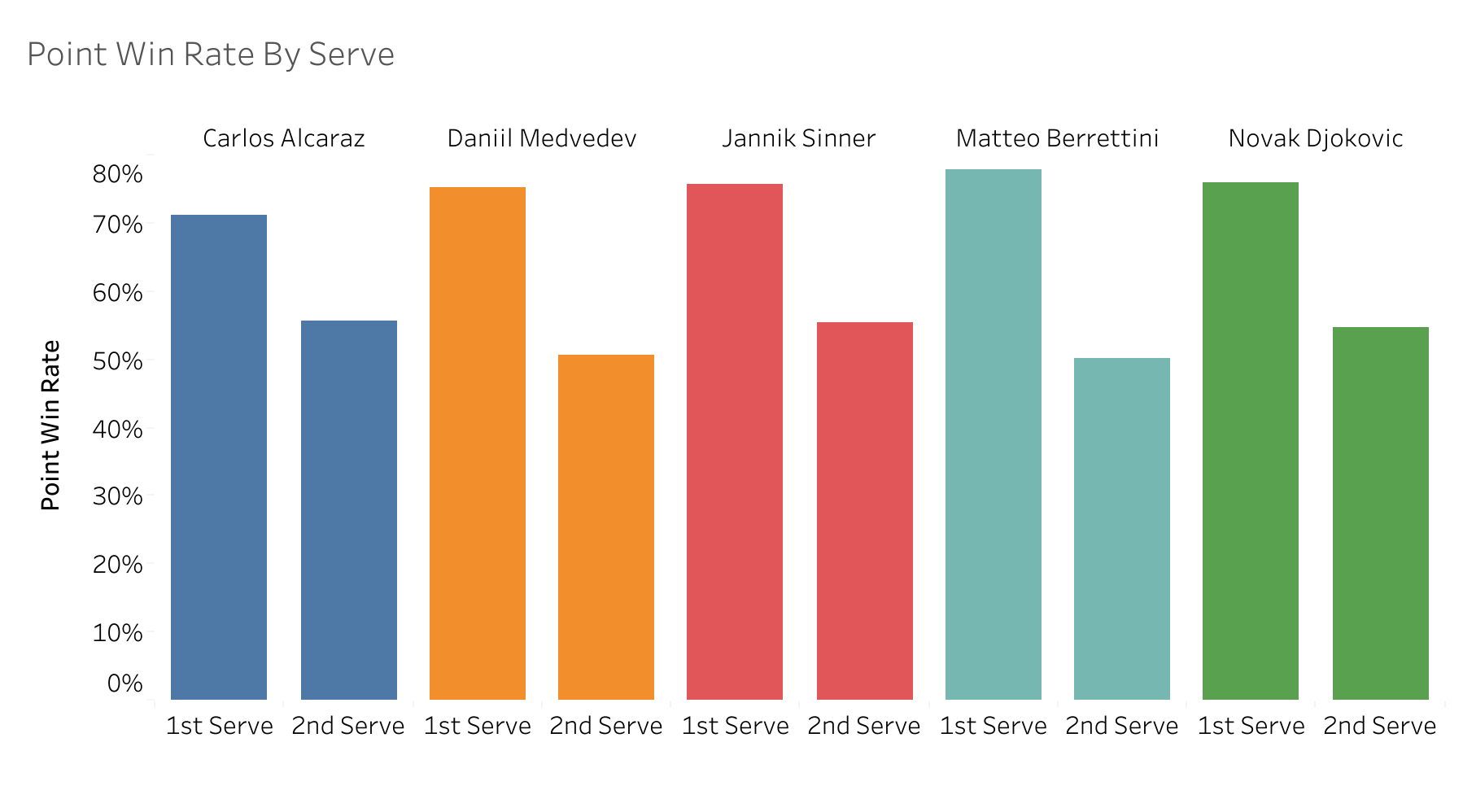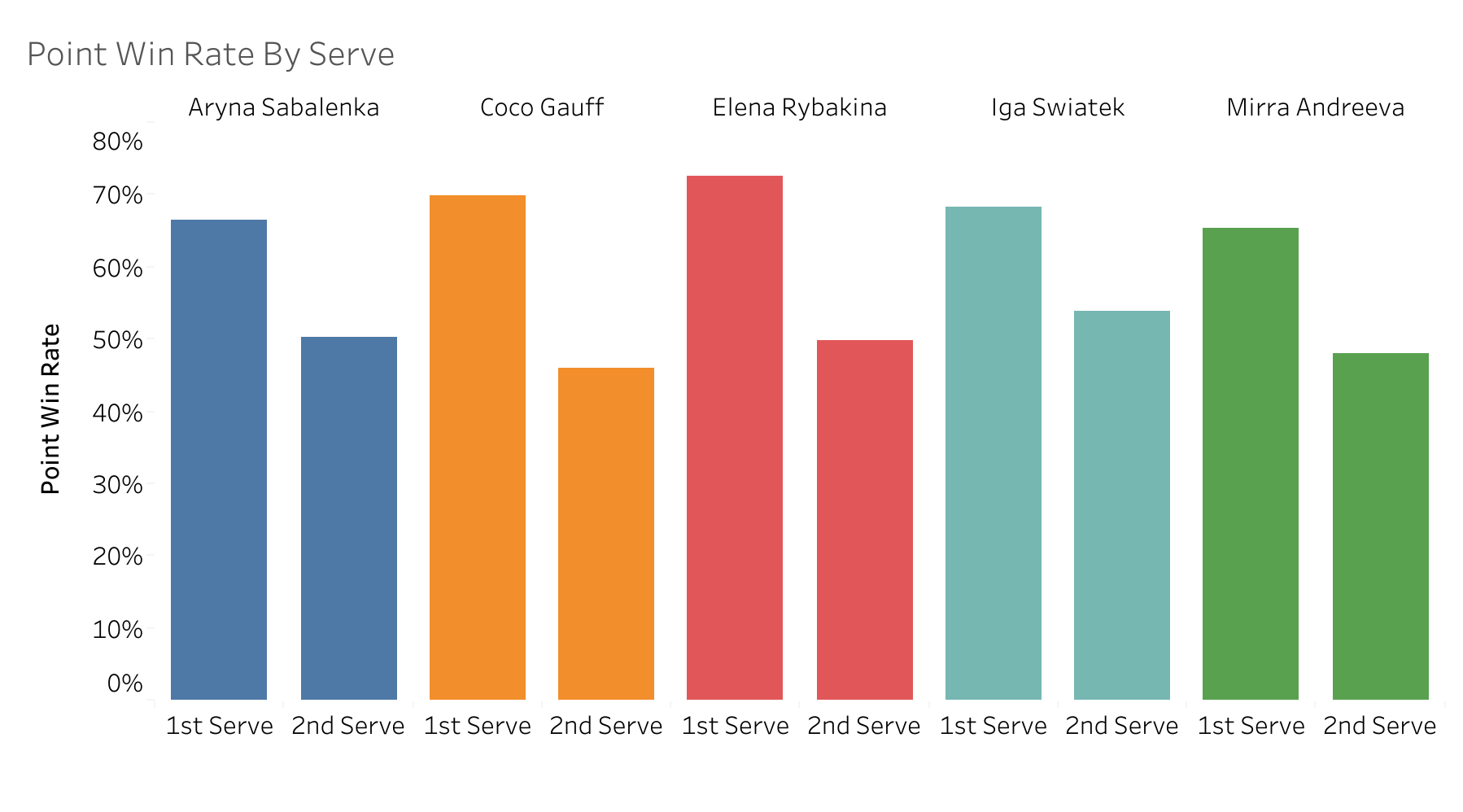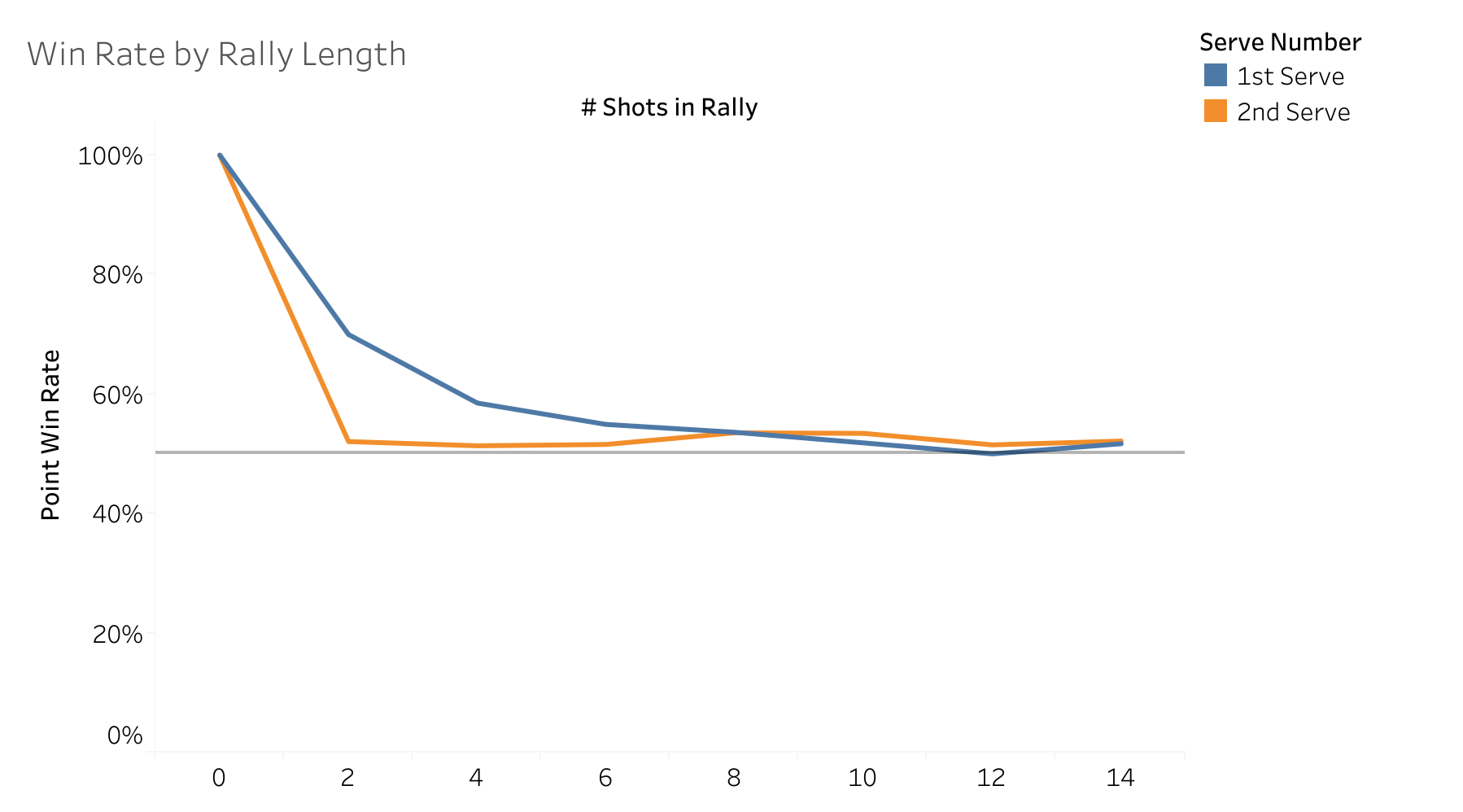Introduction
The big three of Federer, Nadal and Djokovic dominated Tennis between 2003 and 2023. They were so dominant, they won 80% of the available Grand Slams during that period, with all three winning 20+ titles. Over the same timeframe, Serena Williams won 19 of the 83 available titles, with all other Women’s players winning fewer than 6 each. Today, we’ll look at some of the major reasons and data that could explain why it’s much easier to be dominant in the Men’s game, and thus understand why Serena Williams’ 19 titles is a very difficult feat to replicate.
We’ll cover:
- The difference in how points are won between Men and Women
- The implications of best-of-three versus best-of-five
- Biological factors that could impact performance over a career
Revisiting Point Win Rates
In both Men’s and Women’s tennis, you’ll ultimately need to play roughly the same number of points in a set (60 or so), but the distribution of those points between the two players is quite different between the men and women’s game.
In the first post of this series, we analysed the percentage of points won on 1st and 2nd serves for Men’s tennis.

Let’s now compare this to the equivalent data for 5 arbitrarily chosen top Women’s players from the 2020s.

On average across all of the data, we see the following result
| Serve Type | 1st Serve | 2nd Serve |
|---|---|---|
| Men’s win rate | 72% | 51% |
| Women’s win rate | 64% | 46% |
From this we can conclude that Men’s tennis is server dominated, but Women’s tennis is more balanced.
Thus, we would expect Women’s singles matches to be much more closely fought than Men’s, based on the fact that the “Server’s advantage” is significantly reduced. In fact, on a second serve, the server is actually at a slight disadvantage in the Women’s game.
Aces and Rally length
We can explain some of the above data by looking at ace rates and server advantage.
In the first post, we found Men tend to ace on the first serve about 18% of the time. For Women, this is about 7%, likely due to the lower serve speeds we see in Women’s tennis.
- There are some strong servers in the Women’s game however - notably Elena Rybakina with a 17% ace rate on the first serve.
- Since there are fewer aces, a larger proportion of points in Women’s tennis must be rallies more than 1 shot.
Even the top Women’s players, those we identified above, lose a significant amount of their serving advantage after a few shots. (Note that this data will be skewed as a large amount of the points come from Swiatek and Rybakina)

On a second serve, the point is a coin toss if the returner gets it back.
Best-of-three and Best-of-five
One of the other important factors explaining why it’s easier to dominate in Men’s tennis is the format during Grand Slams. As we all know, Women play best-of-three but Men play best-of-five.
If we let be the probability of winning a given set (and hence the probability of losing a set), then our odds of winning a best-of-three are laid out below.
- For 2-0, the result must be Win, Win
- For 2-1, the result can be Win, Loss, Win OR Loss, Win, Win
- 2-0
- 2-1
Overall this gives us the following winning odds for a best-of-three:
For a best-of-five, this becomes:
A player with a 64% () chance of winning a set has a chance of winning a best-of-three match around 70%, but this goes up to 75% for a best-of-five match. That’s a 5% improvement in odds just by the difference in format.
Other factors
There are a multitude of other factors listed here that we don’t have great data on, and they are all potentially important reasons to explain our initial question of why there’s no ‘Big three’ in Women’s tennis.
- Proneness to injury (See this paper which explores the topic further)
- Recovery ability (This study suggests Women may recover faster from sprints than Men)
- Age of peak performance
- Pregnancy (Serena Williams won the 2017 Australian open whilst 8 weeks pregnant!)
- Luck that we had 3 brilliant Men’s players at the same time
Conclusion
As we just discussed, Men’s odds of winning can be around 5% higher simply due to the longer format of matches. We also earlier showed that Men’s tennis has a more significant server advantage. Both of these factors can help to explain why Women’s tennis tends to be much more open ended, but we have only scratched the surface of this complicated topic, and there are many other factors that could be at play.